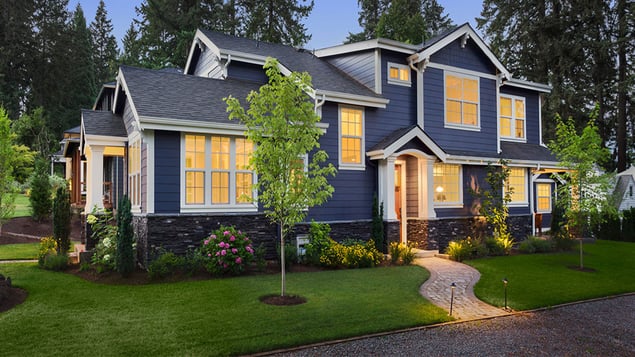The Guide to Energy-Efficient Homes and Buildings
By Supplied Energy on Sep 30, 2021 3:23:31 PM
Blog PostAdvances in technology, clean energy financing, and a better understanding of how energy-efficient products work together make achieving net-zero easier for the average home or building owner. To be net-zero, you must use all-electric systems, which buyers are already trending toward. According to the most recent What Home Buyers Really Want Report from the National Association of Home Builders, most buyers (52 percent, to be precise) want to heat and cool their homes with electricity. What else do you need to do to be energy-efficient, net-zero, or net-positive?

Four Steps to Energy-Efficient, Net-zero Capable Homes and Buildings
Step 1: Invest in Proper Insulation
You want your home or building to be air-tight. We recommend a combination of spray foam and cellulose insulation to achieve a tight thermal envelope. This keeps unwanted outdoor elements, like hot or cold air, out, allowing the heating and cooling system to operate more efficiently, eliminate humidity or extremely dry air, and maintain better air quality.
Step 2: Install a Heat Pump
As mentioned before, buyers prefer an HVAC system that operates using electricity, which aligns perfectly with step two; install a heat pump. To put it simply, there are two different types of heat pumps, air source and ground source. Like the names indicate, air source heat pumps use the air to heat and cool and ground source heat pumps (also known as geothermal systems) use the constant temperature underground to heat and cool. Because they pull from a steadier source, ground source heat pumps are typically two to three times more efficient than air source heat pumps. We can help you determine how much energy and utility cost-savings you'd achieve with both to make a more educated decision.
Step 3: Create Your Own Power
Because you've invested in proper insulation and an energy-efficient heating and cooling system, your electric load (the amount of electricity it takes to power your home or building) is lower when compared to what it would be without following steps one and two. This allows for a solar PV system to cover most, if not 100 percent, of the energy it takes to power your home or building. We recommend looking into other energy-efficient options, like lightbulbs, electric water heaters, etc. to further lower the electric load.
Step 4: Store Extra Energy
If you're interested in living off-grid or want a reliant backup in the event of a power outage, then an energy-storage system is the next and final step. In order to create excess power from your solar system, it's important to convey this desire to the installer during the design phase. A solar array can generate some, most, all, or a surplus of power depending on its orientation and size. Batteries are a generator alternative, which allows you to be energy independent without using any fossil fuels, no matter the conditions.
Putting It All Together
To effectively achieve an all-electric, energy-efficient home or building with the capability of being net-zero, you should follow the steps in this order to avoid under- or over-sizing each of the systems involved. For example, if you were to install a heat pump without following quality insulation practices, then you'd need a larger HVAC system to account for the heating and cooling losses. A larger heat pump requires more power to operate, which leads to the need for a larger solar system to cover the electric load.
Ready to start updating your existing home or building or just starting down the path of new construction? We're here to help you choose the different product options that make each of these steps possible in a way that makes the most sense for your budget and project.



